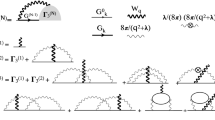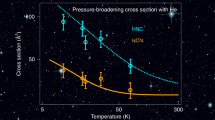Abstract
UP to the present no fine structure has been observed in the singlet series of mercury. In a recent communication to the Physical Society of London (Proceedings, August 1930) a description was given of the spectrum of mercury excited at low pressures by a high frequency electrodeless discharge. Amongst other effects it was found that the singlet series and intercombination lines due to transitions beginning on singlet levels, were strongly enhanced relative to the triplets. The line 61P1 − 81S0 was examined for fine structure with a Fabry-Perot interferometer and found to be single and so narrow (half width < 0.004 A.) as to render it of great value in interferometric work.
This is a preview of subscription content, access via your institution
Access options
Subscribe to this journal
Receive 51 print issues and online access
$199.00 per year
only $3.90 per issue
Buy this article
- Purchase on Springer Link
- Instant access to full article PDF
Prices may be subject to local taxes which are calculated during checkout
Similar content being viewed by others
Author information
Authors and Affiliations
Rights and permissions
About this article
Cite this article
TOLANSKY, S. Fine Structure in the Singlet Series of Mercury. Nature 126, 433–434 (1930). https://doi.org/10.1038/126433b0
Issue Date:
DOI: https://doi.org/10.1038/126433b0
Comments
By submitting a comment you agree to abide by our Terms and Community Guidelines. If you find something abusive or that does not comply with our terms or guidelines please flag it as inappropriate.



